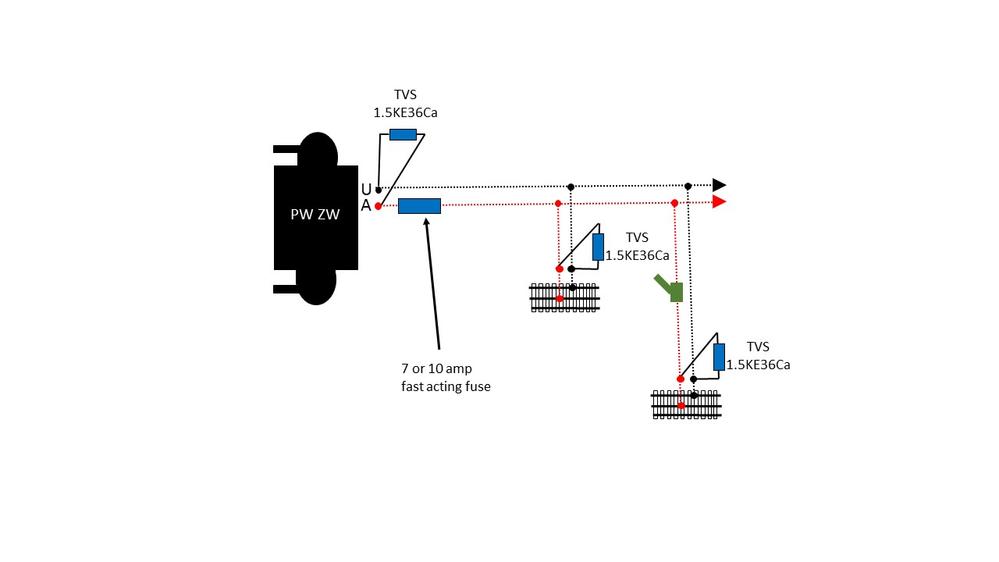I haven't experience with TVS units, but would, as was suggested already, recommend moving to a postwar AF 30B transformer. It lacks the electronics and is rated at 300W as compared to the 100W of the units that you've fried so far. You may need to service the 30B to put it in fine tune again, but once there it's terrific for running S gauge trains of any era (my fave). Also, if your layout is that "spikey" I suggest you protect the electronics inside your modern engines with a DCC Specialties PSX-AC on every loop. They are, in my opinion, the best spike and short circuit protection device on the market and I have years of experience with them at home and on our club layout . They make several models. Get the one for use with AC, but their units for DCC are fantastic as well. I use them too.
Granted, I like PSX-ACs too, but they have their own issues.
#1 The problem with a PSX-AC when used in a conventional control (varying voltage) layout is that there is a minimum voltage before they turn on, as well as a delay. They are "electronic" breakers and so the electronics are powered by the incoming power, and since it's a microcontroller that turns on the transistor- power is not instantaneous passthrough- in fact below 8V may not even turn on. Again the problem on a conventional control layout, as you raise the source transformer voltage, below a threshold voltage, the PSX-AC will not turn on, and then there is also a slight delay. The end result is a jerky start with a minimum speed based on the threshold starting and holding voltage of the PSX-AC. https://ogrforum.ogaugerr.com/...6#153603996675657866
I even went as far as going the steps other suggested in that above link to separately provide logic power to the PSX-AC and found I still had trouble with the low slow rise of voltage turn on point. The PSX-AC would show fault when just the logic was powered with 5V and no AC or DC input, and then once it rose above a certain level, it then would kick in, no longer show a fault and turn on the MOSFETs. Point being, my attempt to work around this problem for conventional failed miserably.
#2 Right in the manual- they describe the TVS diode (transorb) built into the INPUT side of the PSX-AC. So you do have experience with a TVS, you just completely missed that. That is why it can protect (within a limit) a peak voltage spike. That said, it's not exactly easy to replace and if it fails it shorts the input making it look like your PSX failed with an internal short. Point being, you are better to add external and easy to remove and replace TVS (not to mention beefier ratings).
A Transorb (namebrand) is a TVS (Transient Voltage Suppressor).
PSX-AC manual- edit- link added https://www.dccconcepts.com/ma...cc-specialities-psx/











